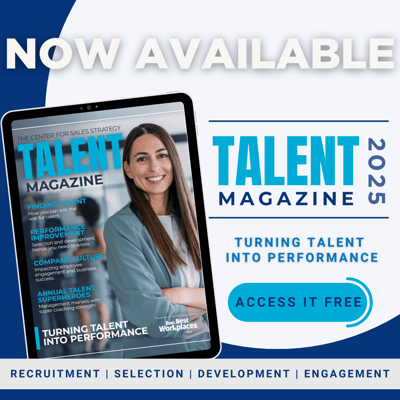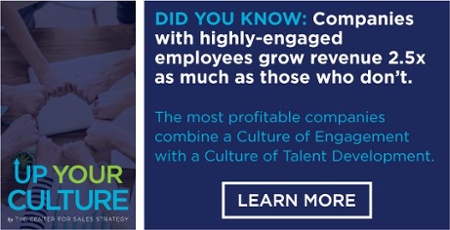
World-class leaders understand improving performance is part art and part science. A recipe that includes the proper blend of both—art and science—is often what separates failure from success and exhibits the following:
- Outstanding performance (beating others in their peer group)
- High level of employee engagement and satisfaction
- Low turnover
- A culture of engagement
- A tribe that everyone wants to be part of
The debate on whether successful sales leadership is truly an art or a science has been running for decades. At The Center for Sales Strategy (CSS), we know that it’s a perfect combination of both. When blended and configured correctly, the fusion between art and science results in a powerhouse sales team and business.
Building a Tribe and Improving Performance
 Seth Godin defines a tribe as any group of people, large or small, who are connected to one another, a leader, and an idea. People are naturally wired to be part of something, to be part of a tribe. Here’s a list of ingredients to consider when building your tribe—take a look and conduct a comparison to your organization.
Seth Godin defines a tribe as any group of people, large or small, who are connected to one another, a leader, and an idea. People are naturally wired to be part of something, to be part of a tribe. Here’s a list of ingredients to consider when building your tribe—take a look and conduct a comparison to your organization.
Hire Talent First, Resume Second
Hiring people based on innate talent makes a great deal of sense; however, this concept is often overlooked or not a common practice by most organizations.
Innate talents are human behaviors that cannot be linked to experience, training, or education. These are things people do naturally. The best way to identify and hire people based on innate talent is to use a predictive talent assessment during the selection (hiring) process.
There are plenty of assessments on the market; however, not all are predictive. Many are merely personality assessments that are broad-based (not industry of job specific) and assess past behaviors without providing insight about future performance. When you consider the best instrument for making strong hires, you’ll want to use an assessment that meets these three criteria:
- Scientifically-validated
- Built for the industry and job for which you are hiring
- Measures talent only – not experience – so you are able to identify potential in people, even if they have not done that exact job before (you can evaluate experience or resume after evaluating talent).
For more information on this topic, check out: Talent and Personality Assessments: What’s The Difference and What to Look For
Don’t forget about fit!
Here’s another important ingredient to think about when making hiring decisions: fit. Selecting people who understand and believe in your mission and reason for being is an essential part of building a tribe and a culture of engagement.
Conducting a fit interview should be part of the selection process. Be sure to keep in mind that talk is cheap, and actions speak louder than words. A great way to move beyond talk and evaluate actions during the hiring process is to involve candidates in activities with members of your tribe to see how they mesh with people on your team who believe in your mission and reason for being.
Note: If you have not defined your mission and reason for being, you might want to slow down and do this before moving forward. Clarity in this area is important.
Invest in talent (post-hire)
Conducting a post-hire conversation and developing a growth plan about the following items will have a positive impact on the person’s development and retention:
- Their job
- How you can coach and support them
- Their goals and what motivates them
- Personal insight that will help you build a strong relationship
Define engagement level
When tribes are small, and in the formative stage, it’s pretty easy to evaluate engagement level. This becomes more of a challenge when organizations grow and expand (adding markets beyond the home base). Additionally, building a culture of engagement is important for the following reason:
- Engaged tribe members are 87% less likely to leave the organization
- Tribes with highly engaged employees grow revenue at a rate of 2.5x than those who don’t.
Build Your Tribe
Leadership today is more challenging than ever. Do you have the proper recipe to be a great leader in 2020 and beyond? Furthermore, do you have the needed ingredients outlined in this post to build a tribe and a culture of engagement? Your future and the future of your tribe depends on you!



